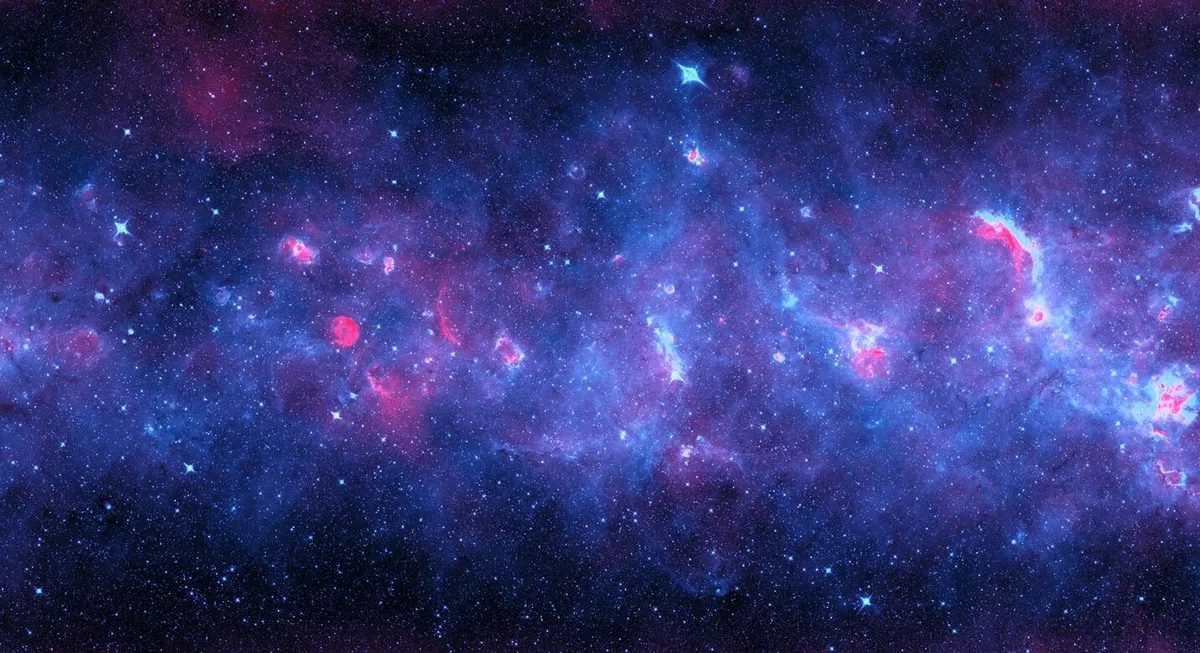Since as far back as William Herschel, astronomers have wrestled with the problem of studying the Milky Way Galaxy while sitting within it.
When creating his own map of our Galaxy, Herschel was led astray by dust within the disc, which blocked the light of distant stars.
This made it appear as if the Sun was at the centre of the Galaxy’s flattened disc, rather than on the edge as we now know.

When his son, John Herschel, mapped the position of nebulae in the sky, producing what would become the NGC, or New General Catalogue that we still use today, it didn’t take long for people to notice that nearly a fifth of the sky was missing, with vast swathes devoid of objects.
The great 19th-century populariser Richard Proctor called this the ‘zone of avoidance’, a fabulous term for the region.
It followed the band of the Milky Way in the sky, where our Galaxy obscures any distant object.
The zone of avoidance has been slowly chipped away at over the subsequent century.
Radio astronomers can help, and most of the reconstructed maps you’ve seen of the Milky Way extrapolate from their maps. But so too can looking in the infrared, a wavelength that passes through the dust with little issue.

We know, from previous observations and from analysis of how our Galaxy moves, that there must be clusters of galaxies in the zone of avoidance.
One, dubbed the Great Attractor, seems to be gravitationally pulling us towards it and is a major influence on how the Milky Way and its neighbours are moving.
To shed some light on this mysterious region, the authors, led by Daniela Galdeano of the National University of San Juan, Argentina, use data from a deep infrared survey conducted with VISTA, the small survey telescope that shares a site with the much grander VLT in the Atacama desert in Chile.

VISTA had been returning to the same patch of sky over and over again to look for variable stars, but the images could also be stacked together to provide deep coverage of the infrared sky.
These revealed 58 possible galaxies in an area just one-fifth of the size of the full Moon.
The giant 8.1-metre Gemini South Observatory telescope was used to follow up five of these, showing that these blobs in the VISTA images really were galaxies, forming a cluster about 2.5 billion lightyears away.
These seem to be perfectly normal galaxies, on average a bit more massive than the Milky Way, and mostly at the point where they are beginning to stop star formation.
This last finding may be an artefact of how the selection was done.
Galaxies that have stopped star formation, being devoid of the sparkle of young, massive, blue stars, are red and might therefore be more likely to be picked up by surveys made in the infrared.
More massive galaxies also seem to reach this stage first, but with many other candidate galaxies as yet unexamined it seems we may be looking at a substantial cluster.
The cluster has been given the unprepossessing name of VVVGCl-B J181435-381432 and is another little bit of the cosmic map, until now hidden behind the Milky Way’s bulge, that has been coloured in.
Chris Lintott was reading Unveiling a New Structure Behind the Milky Wayby Daniela Galdeano et al. Read it online at: arxiv.org/abs/2210.16332.
This article originally appeared in the January 2023 issue of BBC Sky at Night Magazine.

